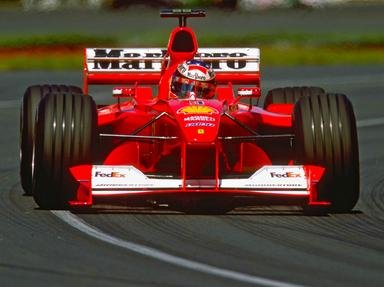Quiz Answer Key and Fun Facts
1. With Juan Manuel Fangio, the 1957 champion, retired, and the 1958 champion Mike Hawthorn killed in a road accident in January 1959, an Australian driver took the title. Who was the 1959 Formula One World Champion?
2. The 1959 World Champion was driving the same car that took the Constructors Championship. What was that British manufacturer?
3. British Racing Motors (BRM) had their first win in the Dutch GP. What driver achieved that milestone for the British Constructor?
4. There were two firsts in the Indianapolis 500 pole position: the driver, Johnny Thomson, and his car. What constructor took pole in the 1959 Indy?
5. Stirling Moss was Rob Walker's lead driver, but his teammate was also a former race winner, who had a fastest lap in 1959. Who drove Walker's other Cooper?
6. Lotus was a young team, only in their second season in Formula One. Their best driver in the 1959 Championship was even younger in the sport, finishing thirteenth in the table his first season in F1. Who was this British driver?
7. Cooper cars were equipped with a variety of engines. The works team (and most of the privateer teams) used Climax engines, but there were other experiments. Which of this engines could NOT be found on a Cooper in 1959?
8. A French driver racing a privateer Porsche qualified sixteenth for the German GP. Before the Grand Prix, though, he entered a sports car supporting race. While racing in the rain, the car slid and went over the banking. The driver was thrown out of the car and hit a flagpole, dying from a skull fracture. Who was he?
9. Starting in 1958, there was a Constructor Championship alongside the Drivers Championship. The score was the same as for the Drivers Championship (8 points for the win, 6 for second place, 4 for third, 3 for fourth, 2 for fifth and 1 point for the fastest lap), but constructors had a different number of cars: some entered just one, while others had several entries (there were 16 Coopers at the British GP). How did the governing body make things fair for the smaller teams?
10. 1959 saw the first United States GP, in Sebring, but there had been Formula One racing in the United States since 1950, since the Indianapolis 500 was part of the Championship. The Grand Prix was different, though, because it took place in a track where F1 cars were competitive, something that didn't happen in Indianapolis, almost always contested just by U.S. drivers. The United States GP was, in turn, contested only by the F1 regulars, apart from a single entry from an American driver that had already entered the 1959 Indianapolis 500. Who was that driver?
Source: Author
Caeiro
This quiz was reviewed by FunTrivia editor
gtho4 before going online.
Any errors found in FunTrivia content are routinely corrected through our feedback system.

